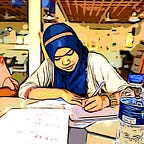Hanbok: A Traditional Attire that Never Goes Out of Style
Hanbok is the traditional dress of Korea and literally translates to Korean clothing. It was introduced in 38 BC during the Goguryeo Dynasty and gained much fame during the three kingdoms of Baekje, Silla and Goryeo. Each one had their own unique style and design that set them apart. But a traditional hanbok generally consists of 2 main pieces; the top known as the jeogori and the bottom called chima for women and bajji for men. The women’s hanbok also included a ribbon that was used to fasten the top and was called the goreum.
Over the years, the designs of these hanboks have changed. They have become modernized and incorporated western styles to suit the younger generation while still staying true to its roots. The modern hanboks are more functional than before and have become popular among many.
Joseon Traditional Hanbok
The traditional hanbok of the Joseon era was inspired by the dynasty before it, and that was the Goryeo dynasty. The designs of this Goryeo dynasty were inspired by Mongolian fashion and were longer at the top and the bottom. But in the Joseon era, the hanboks transformed into a modern version with the jeogori designed shorter and tighter. In the mid of the same era, the hanbok transformed further and the top’s length reached just above the waist. Towards the late 19th century, the jeogori was shortened even more and reached up to the chest. It was worn along with an additional sash that was bound around the chest.
Casual Hanboks
Casual Hanboks are the modern take on a traditional hanbok. They are designed in different ways by incorporating floral patterns, lace and even the ornamental norigae. Unlike the traditional hanbok, these feature shorter skirts that are a trend in most modern hanboks. They are lighter and less layered and can be worn every day or as casual wear. They have also been featured in BlackPink’s How You Like That music video. But the hanboks that the members were seen wearing in the music video were designed with shorts. And they are a completely new design from the traditional skirt or a bajji.
Work Hanboks
Modern hanboks designed for office wear are known as Work Hanboks. They either feature a one-piece dress, a 2 piece modern hanbok with a short skirt or one with a bajji for more convenience. Despite the design, they all include the traditional Jeogori that is a significant part of the hanbok.
Bridal Hanbok
A typical bridal hanbok is designed featuring intricate artwork and patterns that each represent meaning towards a happy marriage, family life and childbearing. It is usually red in colour and is accessorized with many traditional accessories. But in a modern wedding, you would usually find the bride’s and groom’s mothers being the ones wearing a hanbok while the bride is typically dressed in a western gown. Yet to keep the hanbok tradition alive and for those looking for a unique bridal outfit, modern bridal hanboks are designed combining the Eastern culture with the West. They are almost similar to a bridal gown and are white in colour to represent the bride’s femininity. These modern bridal hanboks are styled with delicate stone and beadwork, lace and sometimes includes an attached bridal train as well.
Rented Hanboks
Rented hanboks are those that are offered in many tourist locations in Seoul. These usually feature bright golden patterns, embroidered flowers and many more designs. They are widely available in hanbok rental stores in the area of Insadong.
By paying a deposit for the hanbok you can choose to dress up as a Queen by selecting a royal hanbok or go for a simpler design that an agassi would have worn in the past. When you wear one of these rented hanboks when visiting places like the Gyeongbokgung Palace and the Changdeokgung Palace you can enter them for free. You can also capture amazing pictures at the Hanok Village where you will see many others dressed in hanboks touring the city.
Uniform Hanboks
On the 22nd of October as a part of the Ministry of Culture, Sports and Tourism project modern uniform hanboks were introduced for middle and high school students. The designs were launched in 3 versions; winter, summer and activewear. These modern uniform hanboks have been made to be comfortable enough to be worn as daily wear and durable enough that they can be worn for long. Each version features the traditional collar jeogori and flowy skirt that incorporates the iconic fit and fold of a chima. But unlike the traditional hanbok this modern uniform hanbok’s skirt is shorter and also comes as a dress.
Which one is your favourite?
